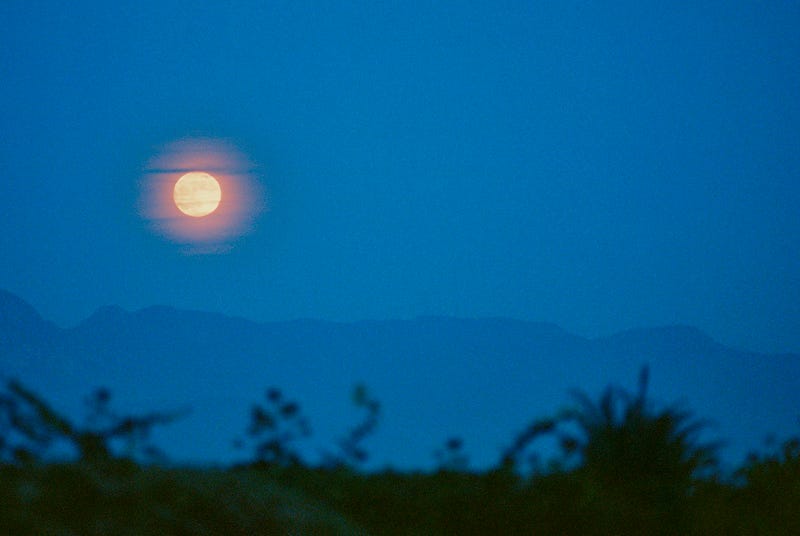The Science and Magic of Sky Colors: From Dawn to Dusk
Written on
Chapter 1: The Quest for Understanding Sky Colors
As a child, I vividly remember my father challenging my brother and me to explain why the sky changes colors at sunrise and sunset. Back then, we had no clue, but he promised $50 to the one who could write an essay on the topic. Despite our enthusiasm, we never took him up on it. Years later, I’ve penned countless pieces, yet I’ve never tackled the mystery of the sky’s transformation.
Perhaps the reason I found this task so intimidating was rooted in a fear that uncovering the truth would diminish the enchantment. The idea of knowing the science behind such a beautiful phenomenon felt almost childish. Would the magic still resonate if I understood it?

Chapter 2: A Photographer's Perspective
Living in Ventura, California, I often find myself captivated by the ever-changing sky. As a photographer, I am entirely at the mercy of the sun—its position, whether it's obscured by clouds, and when it will disappear at day's end. Every sunrise and sunset feels like a unique masterpiece, a daily reminder of nature's artistry. I know I’m not alone in this admiration.
Many cultures hold the moments of sunrise and sunset in reverence, appreciating their inherent magic. For instance, in Izumo, Japan, the sunset was seen as a sacred event, a transition to another realm. The local greeting “banjimashite” is used to acknowledge the coming evening, bridging the gap between "konnichiwa" (good day) and "konbanwa" (good evening). This tradition, rooted in ancient beliefs, has been cherished through generations.
Section 2.1: Mythological Interpretations
Throughout history, various cultures have proposed explanations for the sun's daily journey. In Greek mythology, Helios, the Sun god, was imagined driving his fiery chariot across the sky, bringing dawn each day and bidding farewell at dusk. Similarly, the Egyptians revered Ra, their sun deity, who would traverse the sky in a blazing ship and battle monsters in the underworld at night, only to emerge victorious with each sunrise.
If you prefer a scientific approach, the colors we observe in the sky are a result of sunlight scattering through atmospheric molecules. Gases and aerosols in the air disperse the sun's rays into distinct wavelengths. The greater the concentration of these particles, the more pronounced the colors.

Chapter 3: The Science Behind Sky Colors
When considering why the sky appears blue, it’s essential to understand that sunlight is essentially white light, composed of all visible colors. Sunlight travels in waves, with red having the longest wavelengths and blue and indigo being shorter. As sunlight interacts with air molecules, blue light scatters more effectively due to its shorter wavelength, giving the sky its characteristic hue.

As the sun rises and sets, its light must pass through a thicker layer of the atmosphere, resulting in increased scattering of longer wavelengths, such as yellow, orange, and red. Thus, during these times, the sky often showcases these vibrant colors.
Factors like aerosols can intensify these hues. For instance, during fire season, the sky can take on more orange and red tones. Certain times of the year, particularly summer and autumn, can see higher dust concentrations in the air, contributing to this phenomenon.

Section 3.1: Predicting Weather through Sky Colors
The presence of red in the sky can also serve as a weather indicator. There's an age-old adage among fishermen: “Red sky at night, sailor’s delight. Red sky in the morning, sailor’s warning.” I first heard this while visiting my hometown in Northwest Indiana. As I drove back to college, the sky deepened to a striking red, and I recalled this saying. A red sky at sunset often signifies high pressure and stable conditions, while a morning red sky can suggest an impending storm.

Chapter 4: The Beauty of Sunrises and Sunsets
Sunrises and sunsets evoke an almost surreal beauty. The vibrant colors of these moments leave us in awe. It’s remarkable to think that some places, like Barrow, Alaska, experience thirty days without a sunrise during the polar night, while Norway enjoys seventy-six days without a sunset.
For me, both sunrises and sunsets hold deep personal significance. They represent masterpieces that mark the beginning and end of our days. A rising sun symbolizes fresh opportunities and lessons learned from the past. Conversely, the setting sun signals the close of another day, a time to reflect and unwind as we watch the sky transition from blue to orange to red.

This video explores why the sky is blue and why sunsets often appear red, delving into the science behind these stunning phenomena.
In this video from Canon, learn more about the science of sky colors with engaging visuals and insightful explanations.

Dedicated to my father. Happy birthday, Dad.